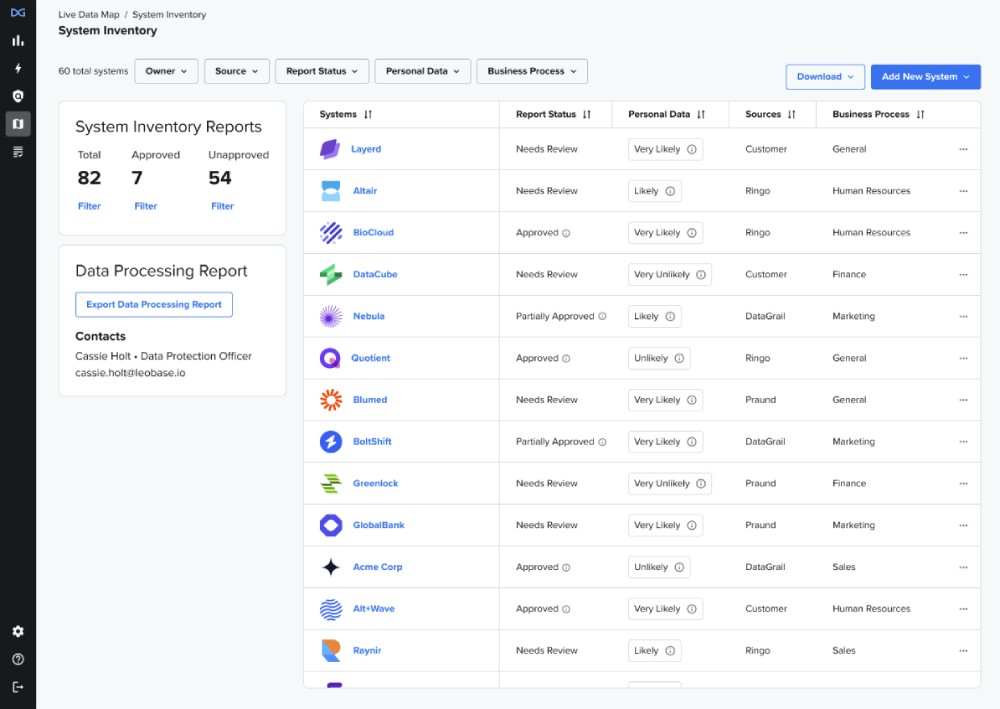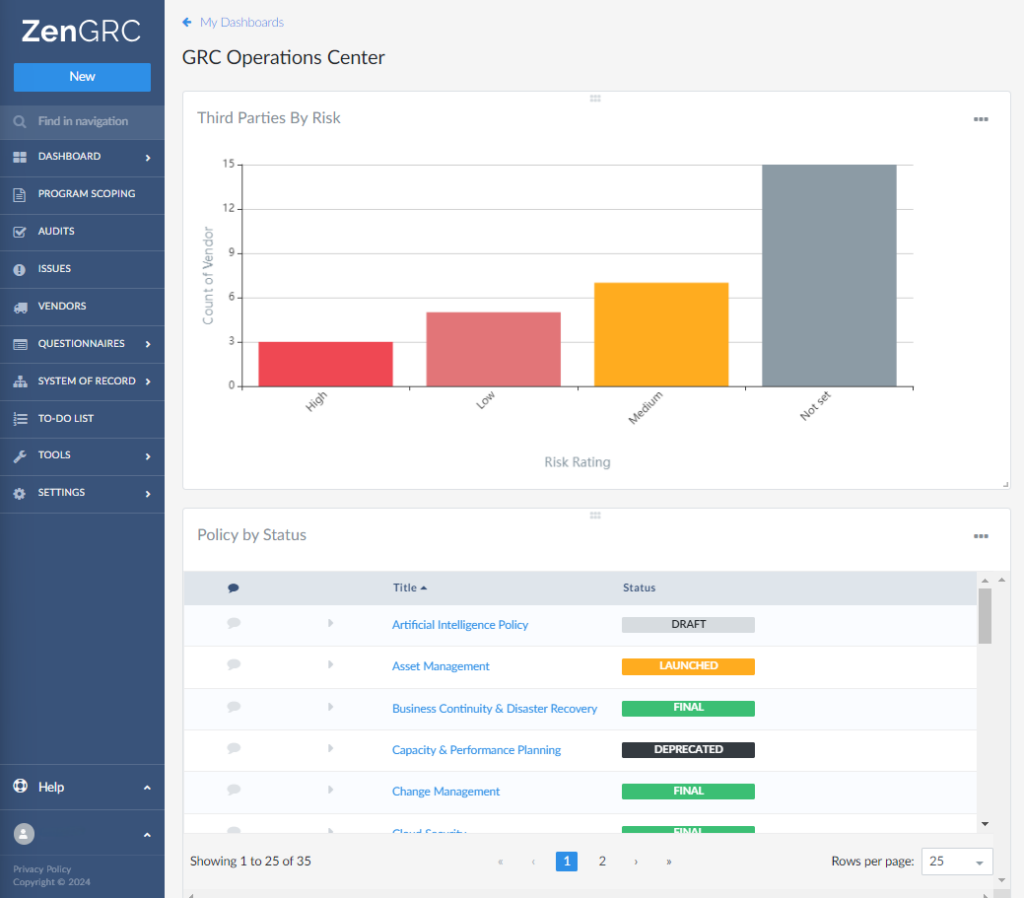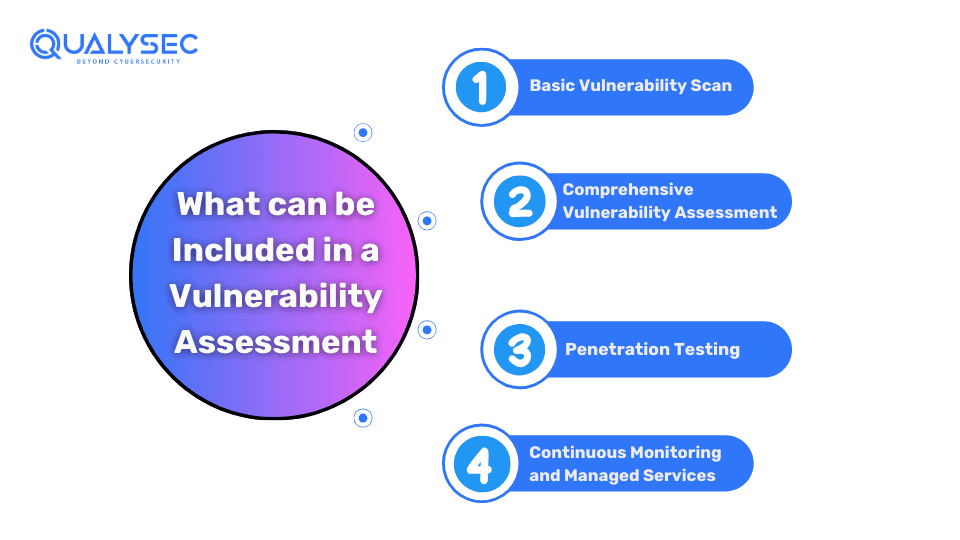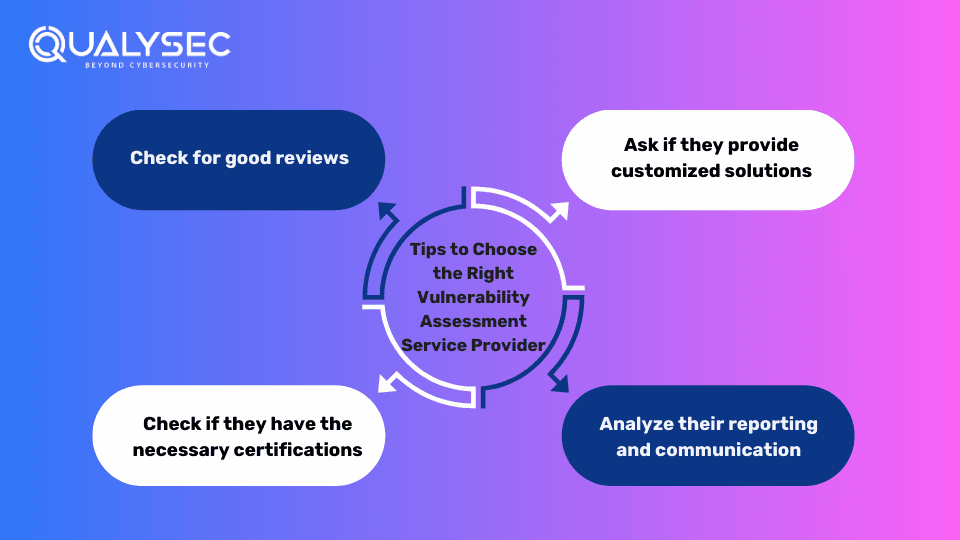In today’s digital age, the importance of data privacy management cannot be overstated. With data breaches making headlines almost daily and regulations like GDPR and CCPA tightening the reins on how personal data is handled, businesses face unprecedented challenges in maintaining customer trust and ensuring compliance. Did you know that according to a report by IBM, the average cost of a data breach in 2023 was a staggering $4.45 million? This figure not only underscores the financial risks associated with data mishandling but also highlights the urgent need for robust data privacy management solutions. These solutions are not just about avoiding penalties; they can transform the way businesses operate, building a foundation of trust and transparency with customers. Dive into the world of data privacy management and discover how it can safeguard your business while enhancing its overall value.
Why Data Privacy Management Solutions Are Essential Today
The Rising Importance of Protecting Personal Data
In today’s digital era, personal data has become a critical asset for businesses. With the rise of data-centric technologies and the complex digital landscape, ensuring the privacy and security of personal data is paramount. Data breaches can have devastating consequences for a company, impacting brand reputation and trust. As companies increasingly rely on data-driven insights to fuel business growth and innovation, safeguarding personal information is not just an ethical responsibility but a strategic necessity. As highlighted in the “Portfolio Company Exit Preparation Technologies to Enhance Valuation,” “Protecting customer data is not only mandatory for regulatory compliance in a lot of industries, it is also often demanded by clients. Data breaches can destroy a company’s brand value, so being resilient to cyberattacks is a must-have, rather than a nice-to-have.”
How Regulations Are Shaping Data Privacy Needs
The landscape of data privacy is heavily influenced by stringent regulatory requirements around the globe. Legislations such as the General Data Protection Regulation (GDPR) in Europe and the California Consumer Privacy Act (CCPA) in the United States are redefining how companies must approach data privacy. These regulations come with significant penalties for non-compliance, making it imperative for businesses to adopt robust data privacy management solutions. Compliance readiness is not only crucial for avoiding fines—it also boosts consumer trust and confidence. The adoption of frameworks like ISO 27002 and SOC 2 plays a vital role in compliance, showcasing a company’s dedication to maintaining high security and privacy standards.
Understanding the essential features of effective data privacy management solutions is crucial as businesses seek ways to protect their assets and ensure compliance. Let’s explore the key components that make these solutions invaluable for modern enterprises.
Key Features of Effective Data Privacy Management Solutions
Automated Data Mapping and Inventory
One of the foundational features of effective data privacy management solutions is automated data mapping and inventory. This process involves systematically cataloging the data assets across the organization to know exactly where personal data is stored and processed. The image below provides an insightful visualization showing a dashboard overview of various systems, their approval statuses, the likelihood of housing personal data, and compliance tracking metrics.

Such capabilities enable businesses to not only maintain compliance with complex data protection regulations but also to streamline internal processes by reducing the extensive manual labor traditionally required for data inventory. Furthermore, as highlighted in D-LAB research, strong data protection practices are essential in safeguarding a company’s intangible assets and maintaining strong investor confidence.
Real-Time Compliance Monitoring and Reporting
Real-time compliance monitoring and reporting offer businesses the agility needed to respond swiftly to regulatory inspections and changes. The analytics dashboard chart displayed in the image offers users a clear view of user engagement and consent patterns, which are critical compliance indicators.

These tools often include alert features that notify administrators of potential infractions or policy updates. “Comprehensive frameworks like ISO 27002 and NIST are crucial not just for legal compliance, but also for enhancing credibility, as they significantly boost buyer trust and reduce the risk of data breaches” (“Portfolio Company Exit Preparation Technologies to Enhance Valuation — D-LAB research”).
Advanced Data Subject Request Automation
Modern data privacy management solutions integrate advanced automation capabilities to efficiently handle data subject requests (DSRs). These features ensure that organizations can address requests—such as access, rectification, or erasure—promptly and in compliance with data protection laws. Automating these workflows enhances accuracy and reduces the administrative effort, ensuring that businesses meet obligatory timeframes and avoid penalties.
With these key features forming the backbone of data privacy strategies, the next step involves choosing the right data privacy management software for your business needs. It’s essential to consider vendor credibility, integration capabilities with existing systems, and the specific needs of your organization to maximize the benefits of these solutions.
Choosing the Right Data Privacy Management Software for Your Business
Evaluating Vendor Credibility and Support
When selecting a data privacy management software, understanding the credibility and support offerings of the vendor is crucial. A reputable vendor should have a proven track record in your industry, evidenced by positive testimonials, case studies, and client references. This assurance ensures you are not only selecting a functional tool but one that has successfully aided similar businesses.
Furthermore, robust customer support is non-negotiable. Opt for vendors that provide comprehensive support services, including dedicated account managers, technical support, and active user communities. The availability of detailed documentation and training resources can also expedite the onboarding process and ensure ongoing smooth operation.
Assessing Integration Capabilities with Existing Systems
Integration capabilities are another decisive factor when choosing data privacy management software. The software should seamlessly integrate with your current systems, including CRM, ERP, and data storage solutions, to enable a unified approach to data privacy. This seamless integration is vital for maintaining data consistency and achieving higher efficiency across your business operations.
Moreover, consider systems that offer API integrations, which provide flexibility and scalability as your business grows and your technological landscape evolves. A solution that effortlessly integrates into existing workflows minimizes disruption and eases the transition period significantly.
Now that we’ve covered how to select the right software, let’s delve into how data privacy solutions can lead to an increase in business valuation.
Data Privacy Management Solutions to Increase Business Valuation
Leveraging AI for Enhanced Customer Retention and Upselling
AI-driven data privacy management solutions can significantly enhance customer retention and create upselling opportunities, thereby increasing business valuation. By leveraging AI technologies, businesses can personalize customer interactions and predict customer desires, leading to increased customer satisfaction and loyalty. This is particularly important because “high customer retention means that a significant portion of a company’s revenue is recurring and predictable,” which in turn “reduces the business’s overall risk profile” and enhances “EV/Revenue and EV/EBITDA multiples” (“Portfolio Company Exit Preparation Technologies to Enhance Valuation — D-LAB research”).
AI can also streamline operations in various departments such as sales and customer service. By automating tasks like sentiment analysis and personalized product recommendations, companies can “boost upselling and cross-selling by 15%” and “increase customer satisfaction by 25%” (“Portfolio Company Exit Preparation Technologies to Enhance Valuation — D-LAB research”). Consequently, these enhancements not only drive customer retention but also generate additional revenue streams that positively impact business valuation.
The Role of Compliance in Improving Buyer Trust
Compliance with data privacy regulations plays a critical role in building and maintaining buyer trust. Adhering to strict data protection standards like ISO 27002, SOC 2, and NIST frameworks not only defends against value-eroding breaches but also enhances the credibility of a business in the eyes of potential buyers. Such compliance readiness boosts buyer trust, as customers and stakeholders see the company as reliable and secure. This is crucial because, as noted in the unique research, “compliance readiness boosts buyer trust” and helps in “de-risking investments” (“Portfolio Company Exit Preparation Technologies to Enhance Valuation — D-LAB research”).
Data breaches can severely impact a company’s reputation and financial standing, thus being resilient to cyberattacks is essential for maintaining and increasing business valuation. Investors are more likely to be attracted to companies that demonstrate strong compliance track records, as these organizations are viewed as lower-risk investments with long-term stability.
As we explore further into how AI can transform data privacy management strategies, it’s essential to understand how these technologies can offer a competitive advantage in today’s rapidly evolving digital landscape.
Thank you for reading Diligize’s blog!
Are you looking for strategic advise?
Subscribe to our newsletter!
Leveraging AI in Data Privacy for Competitive Advantage
The integration of artificial intelligence (AI) into data privacy management is revolutionizing the way businesses handle sensitive information. By leveraging AI, companies can not only improve their privacy protocols but also gain a significant competitive advantage in the marketplace.
How AI Agents Can Reduce Operational Costs
AI agents can automate repetitive and manual tasks often associated with data privacy compliance, such as data inventory management, consent tracking, and regulatory reporting. This automation not only ensures accuracy but also helps to significantly reduce operational costs. Companies implementing AI agents can expect “40-50% reduction in manual tasks and a 30% time savings by automating CRM interactions” (“Portfolio Company Exit Preparation Technologies to Enhance Valuation — D-LAB research”). This efficiency allows businesses to reallocate resources towards strategic initiatives that drive growth.
Real-Time Analytics for Proactive Data Management
AI enhances data management by providing real-time analytics, enabling businesses to proactively manage privacy risks before they escalate. With real-time insights, companies can quickly identify data breaches and compliance gaps, thus safeguarding their brand reputation and avoiding costly penalties. By incorporating AI-driven analytics, businesses can achieve a “30% reduction in customer churn” by promptly addressing privacy concerns (“Portfolio Company Exit Preparation Technologies to Enhance Valuation — D-LAB research”). Such proactive data management ensures ongoing compliance and builds customer trust, crucial for maintaining a competitive edge.
The transformative role of AI in data privacy management not only maximizes operational efficiency but also aligns with strategic objectives that enhance customer satisfaction and trust. As businesses prepare to adopt these advanced technologies, it becomes essential to understand key features that contribute to effective data privacy solutions.
Conclusion: Future-Proofing Your Business with Data Privacy
Ensuring Long-term Compliance and Security
In an era where data breaches can severely damage a company’s reputation and financial standing, ensuring long-term compliance and security is non-negotiable. Adopting robust data privacy management solutions not only provides immediate compliance with current regulations but also fortifies your business against future changes in data protection laws. By employing frameworks like ISO 27002, SOC 2, and NIST, businesses can “defend against value-eroding breaches, derisking investments” and enhance the reliability of their data protection strategies (Portfolio Company Exit Preparation Technologies to Enhance Valuation — D-LAB research). These frameworks not only protect sensitive data but also ensure that your business continually monitors, assesses, and enhances its cybersecurity measures, creating a resilient security posture that evolves with the industry.
Building Trust and Transparency with Stakeholders
Creating a transparent data privacy policy and consistently demonstrating compliance builds trust with all stakeholders, including customers, partners, and investors. When customers believe their data is protected, they are more likely to engage and share more valuable information, leading to better customer relationships and increased revenue potential. Likewise, transparency in data management practices reassures investors and partners of the company’s commitment to ethical business practices, thus enhancing credibility and potential valuation.
As we transition to the next topic, understanding how leveraging AI in data privacy can provide a competitive advantage will be crucial. It’s not just about compliance but transforming that compliance into a strategic asset for deeper market penetration and innovation. The next discussions will delve into these opportunities and strategies to capitalize on them effectively.





















